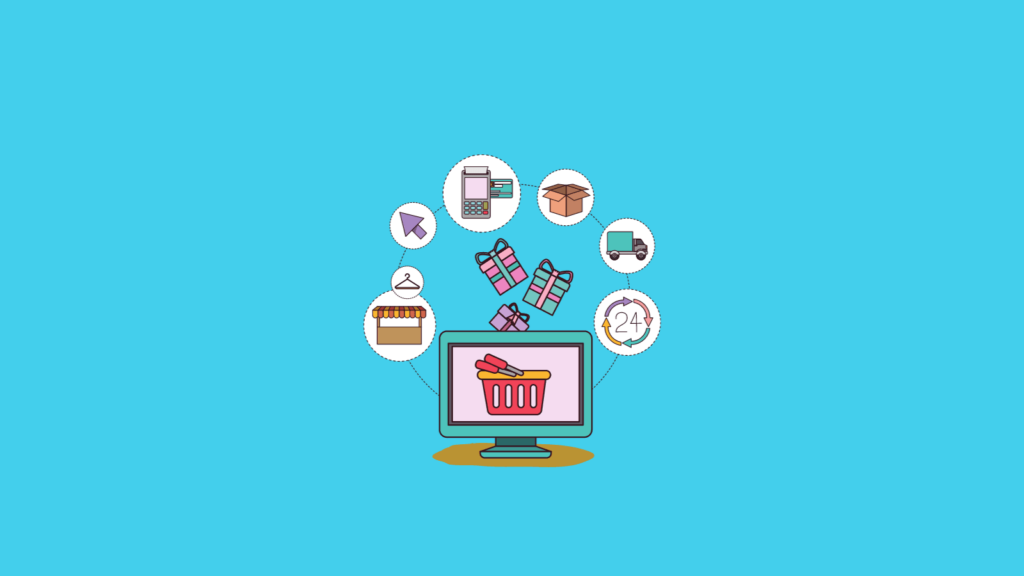How to Avoid Payment Failures on Your E-Commerce Website
When you run an online store, payment failures carry a twofold setback. On one hand, there’s an immediate financial impact, with potential revenue slipping away. On the other, there’s a more subtle, yet equally damaging consequence: the erosion of customer trust. At a time when user experience has become a key determinant of brand loyalty, consistent payment issues can deter customers from returning to patronize your business.
Whether they arise from technical glitches, user errors, outdated systems, or any other reason, failed payments are a common setback for both budding and established e-commerce businesses. On the bright side, this means the most common causes of payment issues also now have practical solutions that businesses can leverage. If you operate an e-commerce venture and have been wondering about how to optimize your payment process to prevent failed payment transactions, then read on.
The following steps are some of the simplest but most effective ways to do just that.
Chapters
Choose a Reliable Payment Gateway

In the maze of online transactions, a payment gateway serves as an essential bridge that connects buyers with the sellers they wish to transact with. These platforms have the crucial role of authorizing and processing payments, acting as intermediaries between a customer’s bank and the merchant. Given their pivotal function, investing in an efficient and reliable payment gateway can greatly influence the success rate of your online transactions.
When it comes to choosing a functional and dependable payment gateway, Philippines-based startups and SMEs have frequently found success using Maya Checkout, an online payment solution offered by local payments provider Maya Business. Specifically tailored to the dynamic Filipino market, this digital payment gateway is a robust platform that is compatible with a diverse range of digital payment methods popular in the country. But what truly makes Maya Checkout stand out is its comprehensive suite of features, which has been intricately designed keeping both businesses and consumers in mind.
At its core, Maya Checkout seeks to enhance the entire e-commerce experience rather than simply facilitate transactions. For one, given the often wrongfully perceived risks associated with digital transactions, Maya Checkout takes care to balance a fast and simple payment process with airtight security. The system comes equipped with 24/7 fraud protection features that scrutinize every transaction for potential threats. Furthermore, shops operating out of popular platforms like Shopify and WooCommerce have the option of integrating Maya Checkout easily via a simple plugin. Given this combination of top-notch functionality and user-friendliness, it’s no surprise that Maya Checkout is coming to be widely regarded as the best payment gateway currently available to Philippine businesses.
For additional insights on mitigating payment disputes and chargebacks, check out this comprehensive guide on how to prevent chargebacks. You might also want to check out this guide on what is a merchant account. It covers all about merchant accounts and payment gateways to help you choose the right payment system
Update Your System Regularly
Digital technology today is forever changing and evolving, and developers everywhere chase innovation at a breakneck pace. Thus, you can expect that the technologies you use to run your online store—from your chosen payment gateway to any plugins you’ve installed—to be in a state of constant flux. Developers will frequently be rolling out updates to fix known issues or introduce new features, and while it might be overwhelming to keep up with the changes, it’s in your best interest to do so. For one, you’ll get to take advantage of cutting-edge technology as soon as it’s available—but besides that, periodic system updates will also guarantee the smooth functioning of your online store from day to day.
Outdated systems can be a breeding ground for glitches, causing unexpected payment failures or even making the site vulnerable to cyber threats. Moreover, the rapid evolution of web standards and technologies can give rise to compatibility issues, which, in turn, leads to functional breakdowns in the payment process. Regularly updating and patching systems is akin to a routine health check-up for e-commerce platforms—it ensures the heart of your store (your transaction process) remains healthy, pumping life (revenue) into the business.
Provide Multiple Modes of Payment

The e-commerce ecosystem has become so vast and diverse that there is no single payment method all customers will be willing to use. You can expect that each of your customers will have their own opinions about which modes of payment are the most convenient, the fastest, or the most trustworthy for them. While some may prefer direct bank transfers, others might lean towards e-wallets or even QR payments. Others will be more comfortable to use payment cards or to still rely on cash. As the seller, it’s in your best interest to recognize and accommodate this spectrum of preferences and provide your clients with the means to pay the way prefer.
Offering multiple payment methods can significantly reduce friction in the checkout process by catering to the widest possible spectrum of payment preferences. You also provide yourself and your customers with contingency measures in the event that their first chosen mode of payment fails for reasons beyond your control, such as problems on the end of their bank or credit card company. Customers will appreciate the ability to easily switch over to a different payment method in such cases, and you’ll be less likely to see failed or abandoned transactions.
Mobile-Optimize Your Website
The smartphone revolution has reshaped the way consumers interact with online businesses. Gone are the days when online shopping was predominantly a desktop activity. Today, a significant chunk of transactions happen on mobile devices, making mobile optimization an imperative for e-commerce businesses.
A site optimized for mobile doesn’t just mean that it’s accessible on a smartphone—it needs to offer a seamless, intuitive experience tailored to smaller screens. This entails ensuring that users can click buttons, text is legible without zooming, and navigation is straightforward. Payment processes, in particular, should be streamlined on mobile, with minimal steps and clear prompts. Given the propensity for users to abandon carts on mobile due to cumbersome processes, your business stands to gain significantly by ensuring that your payment procedure is mobile-friendly.
Test Your Checkout Process Regularly
Even the most meticulously designed e-commerce platforms aren’t immune to issues. And when it comes to the checkout process—a critical juncture where the customer commits to a purchase—it’s especially critical to make sure that everything operates flawlessly. Periodic testing is the antidote to potential hiccups that might arise.
Regular testing should simulate the user experience across a spectrum of scenarios. Test your checkout process on different devices, from smartphones to tablet computers to desktops, and across various browsers. It’s also vital to ensure that any updates—whether they’re to the e-commerce platform or the payment gateway—don’t introduce new problems. By routinely monitoring and testing the checkout process, you can preemptively address issues, ensuring that customers face no barriers when they’re ready to complete their purchase.
In the bustling world of e-commerce, optimizing payment processes is more than a technical requirement—it’s an essential facet of cultivating customer trust and loyalty. As your business evolves and grows, putting smooth, secure, and adaptable payment mechanisms in place can spell the difference between short-lived transactions and lasting relationships with your customers.
FAQ
What Are Payment Failures in E-Commerce?
Payment failures in e-commerce occur when a customer’s payment for an online purchase is declined or unsuccessful.
Why Do Payment Failures Happen in E-Commerce?
Payment failures can occur due to various reasons, including insufficient funds, expired credit cards, technical glitches, and fraud prevention measures.
How Can E-Commerce Businesses Prevent Payment Failures?
E-commerce businesses can prevent payment failures by optimizing their payment processes, using fraud detection tools, and providing clear payment instructions to customers.
Is Offering Multiple Payment Options Beneficial?
Yes, offering multiple payment options can reduce the chances of payment failures as it allows customers to choose their preferred payment method.
What Role Does Payment Gateway Integration Play?
Payment gateway integration ensures secure and smooth payment processing on e-commerce websites, reducing the risk of payment failures.
How Can Address Verification Help Prevent Payment Failures?
Address verification systems (AVS) help verify that the billing address provided by the customer matches the address on file with the payment card issuer, reducing fraud and payment failures.
Are Automatic Payment Retries Effective?
Automatic payment retries can be effective in resolving temporary payment issues, but businesses should implement them with customer consent and clear communication.
Should E-Commerce Businesses Communicate Payment Failure to Customers?
Yes, e-commerce businesses should promptly communicate payment failures to customers, providing clear instructions on how to resolve the issue.
How Can Customer Support Assist in Payment Failure Resolution?
Offering responsive customer support can help customers resolve payment failures quickly, improving their overall shopping experience.
What Should Customers Do When Facing Payment Failures?
Customers should ensure they have sufficient funds, check card expiration dates, verify billing information, and contact customer support for assistance when facing payment failures during an online purchase.
Create more and better content
Check out the following resources and Grow!